Kruger Day 3
- hollymathwriter
- Mar 27, 2023
- 4 min read

Today's highlight was a leopard in a tree. This is the cat you expect to find up a tree. It had its eyes on a herd of impala, but did not make a move on them while our safari vehicles were around. It was an exciting way to close out our Kruger Safari at the end of the morning.
Today's highlight was a leopard in a tree. This is
We drove out that morning with a beautiful full moon still in the sky.

Soon we came upon a herd of wildebeest intermixed with giraffes. There were some young calves with both the wildebeest and giraffes. Wildebeest mommas give birth in the middle of the herd so the herd itself offers protection. Most of them give birth in the same month so there are many calves at the same time. Lions and other predators get some of them, but because there are so many more survive than had they all been born at different times.
Giraffe, on the other hand, go off by themselves to give birth. They return to the same place they had previous babies. They remain vigilant and standing when giving birth so the baby has a bit of a drop to the ground, but it doesn't hurt the baby.
Next we saw some lions resting near the side of the road. There appeared to be a bit of a mane growing around the first, so they may have been a brother and his sisters resting together.
A herd of impala were just down the road from the lions. Although the lions occasionally glanced over to them, they seemed content to remain resting. However, as we drove on the impalas were on the move crossing the road in front of us.

A pair of double-banded sand grouse were foraging in the road ahead of us. They are nocturnal birds, so we were lucky to see them out and about in the early morning. They are named for the markings on the male bird who has the black and white bands above his beak and a yellow ring around his eyes. The female has the yellow eye, but not the double band.
As we drove through the reserve, we saw many familiar friends including elephants,

guinea fowl,
Egyptian geese,

a crowned lapwing,

magpie shrike,

and a Eurasian collared dove.

We then spotted another group of wildebeest and intermingled with them were a pair of white rhinoceros! We knew they were white rhinoceros instead of black rhinoceros because they were grazing. White rhinos graze (eat grass) and black rhinos browse (eat leaves of bushes and trees).
Next we saw some more familiar birds. Can you tell which is the bustard, the coucal (possibly the blue-headed one this time), the lilac-breasted roller and the spurfowl?
More wildebeest! This time with zebra.
Sharp eyes spotted the serrated hinged terrapin heading into the bushes. We saw it out of the water this time, but they are usually in or near the water and can sometimes even be seen on the backs of hippopotami!
Many flowers dotted the landscape of the park. Here is a dayflower (blue) and heliotrope (white).

Time for more birds. Which is the African fish eagle, the European roller, the ring-necked dove, and the yellow-billed hornbill?
Far in the distance, our guide pointed out a group of 6 rhinos. Although rhinos tend to be solitary animals, the white rhinoceros is the most sociable of the rhinos and can often be seen together in a crash of rhinos.
We saw a warthog with an oxpecker at working eating the pests from his hide.
Not long after, we saw a pair of rhino up close as they crossed in front of our safari vehicle.
Several giraffe were next. A male was interested in a female and sniffed her rear end to see if she would be receptive to him. (The smell of the urine indicates if females are in a fertile period.)
After seeing herds of zebra, impala, and wildebeest gathered together, we headed for the grand finale of the trip.

The leopard in a tree watching a herd of impala was the exciting end to our last safari at Kruger. Unlike lions, leopards are excellent tree climbers. They have powerful shoulders and front legs which let them pull themselves up on trees. Their claws are designed to grip the bark of trees. Their backbone is very flexible so they can twist and turn up to 180 degrees which helps them balance more easily in the tree.
We returned to the lodge for a final breakfast. Then we gathered our suitcases and headed out to the airport for our flight to Durban.
Upon leaving the lodge, we again traveled through the reserve for a final goodbye to the wildlife there. We had the same driver who brought us in. He used to work for an anti-poaching team and had a wealth of information about the battle against poachers.
We then drove the beautiful South African countryside. In the background are the Lebombo Mountains that mark the border between South Africa, Eswatini, and Mozambique. We drew closer to them as we neared Eswatini before turning towards the airport. The geography was stunning with the different types of rocks and the blanket of green that covered them. We passed farms of sugar cane, bananas, pineapple, and other crops. Many of the farms had aloe plants separating the farm from the highway.
As we drove into the airport, we passed by a pasture of impala with a black impala. Our driver said it was the only black impala in the world and was the result of a failed attempt to create a special breed of impalas.







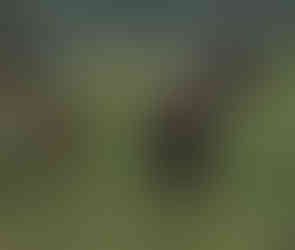


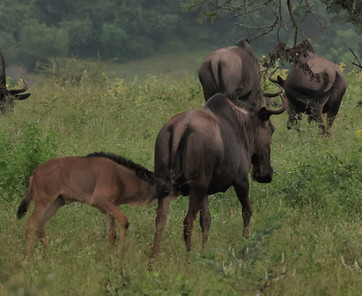


















































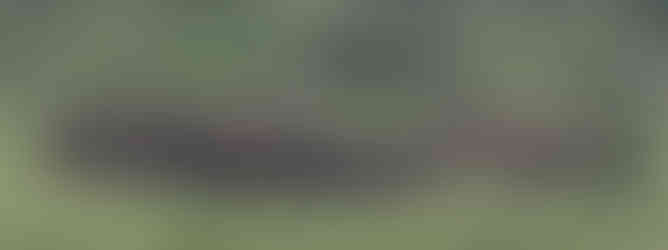


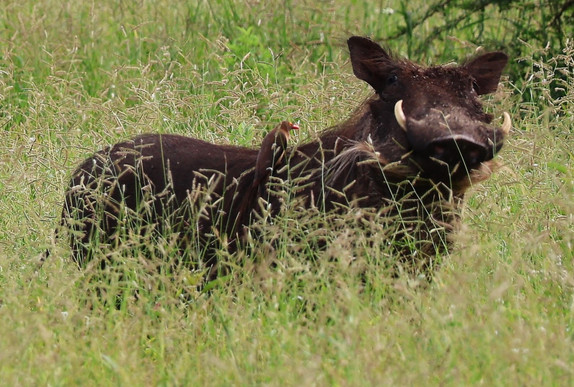

























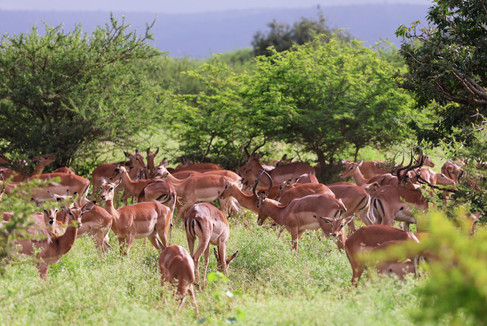


























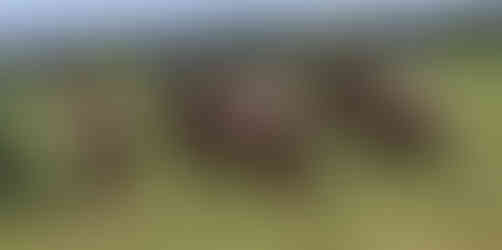



























These pictures are so high-quality - and you saw so many animals and birds! The baby elephant is adorable, and the giraffes are so graceful. I love all the informative tidbits as well!